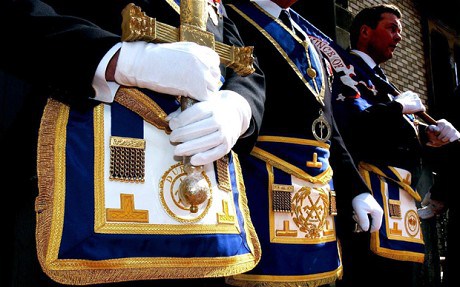En: Traditional Observance Masonic Lodges: Unterschied zwischen den Versionen
Keine Bearbeitungszusammenfassung |
Keine Bearbeitungszusammenfassung |
||
| Zeile 20: | Zeile 20: | ||
Traditional Observance, Convivial and Enlightenment Lodges are only a part of a much bigger equation. They represent only a fraction of the fraternity when compared to Community Lodges which thrived during the late 19th and early 20th centuries. Community Lodges will remain the majority for the foreseeable future, but the recognition of specialized Lodges is essential to the future of the Craft. | Traditional Observance, Convivial and Enlightenment Lodges are only a part of a much bigger equation. They represent only a fraction of the fraternity when compared to Community Lodges which thrived during the late 19th and early 20th centuries. Community Lodges will remain the majority for the foreseeable future, but the recognition of specialized Lodges is essential to the future of the Craft. | ||
== Links == | |||
*[http://dr-david-harrison.com/fm101/traditional-lodges/ Traditional Lodges] | |||
Version vom 24. November 2015, 10:18 Uhr
Traditional Observance Masonic Lodges: Only Part of the Equation
by David Harrison and Jeff Peace
Traditional Observance Masonic Lodges are springing up across the United States. They are quite popular with younger Masons seeking a spiritual path to self improvement through exploration of the Western Mystery Tradition. These Lodges are proof that Mason and historian Jim Tresner was correct in his classifications of the types of people who become Freemasons. (See Multiplex of Masonry) Unfortunately, the Grand Lodges have been slow to understand the value of this information, and take advantage of it in both marketing and strategic planning. It’s also important to recognize that Tresner’s work and the creation of Traditional Observance Lodges is now over a decade old. New statistical information, based on demographic studies, is available that sheds even more light (no pun intended) on the subject.
Tresner identifies seven reasons why men join and remain a part of the Masonic fraternity. He doesn’t, however, explain that member retention may be far more important to the future success of Freemasonry than attracting new members. Attracting men to Freemasonry can be an expensive endeavor. Billboards, TV advertising, and Internet ad campaigns cost money, while word of mouth promotion is not only free, it has far more credibility. Thus, focusing on the satisfaction of existing members retains them while at the same time promoting the benefits of the Craft. It’s much easier to create satisfaction among members when you understand what they want from the fraternity.
While Tresner categorizes the reasons men remain engaged in Masonic Lodges, he doesn’t define the types of Lodges that would best serve the groups identified in his paper. Over the past several years three unique types of specialized Masonic Lodges have been identified: Traditional Observance, Convivial, and Enlightenment. Convivial lodges were first discussed by Richard Graeter in his lengthy examination of the present state of Freemasonry, entitled Reform Freemasonry. In his paper he examines many of the problems facing Freemasonry in the 21st century, and provides possible solutions. One of the solutions is the “Convivial Lodge”.
Convivial Lodges share many things in common with Traditional Observance Lodges, but they differ in their lack of interest in the Western Mystery Traditions. The Convivial Lodge is driven by the desire for social interaction with other honorable and moral men. Special events and Festive Boards are key elements in the success of Convivial Lodges. These Lodges are proving to be quite successful in the United Kingdom, and have the full backing and support of the United Grand Lodge of England.
The third type, Enlightenment Lodges, derive their name from the Age of Enlightenment, and share many things in common with Convivial Lodges. The are differentiated from Traditional Observance in that they focus on Western Philosophy and Science, and have little interest in the Western Mystery Tradition. Enlightenment Lodges are usually found in or around University campuses.
Presently, all three types are commonly referred to as “Traditional Observance”, and this has led to some confusion. Since all three types share the Festive Board and a dress code in common, they look strikingly familiar from the perspective of the average person or Mason. Their interests and activities are, however, very different. The differences between them needs to be recognized and understood as a part of future strategic planning. This would better enable Grand Lodges to direct potential candidates to Lodges based on their own preferences. In theory this should act to improve overall member retention.
Traditional Observance, Convivial and Enlightenment Lodges are only a part of a much bigger equation. They represent only a fraction of the fraternity when compared to Community Lodges which thrived during the late 19th and early 20th centuries. Community Lodges will remain the majority for the foreseeable future, but the recognition of specialized Lodges is essential to the future of the Craft.

